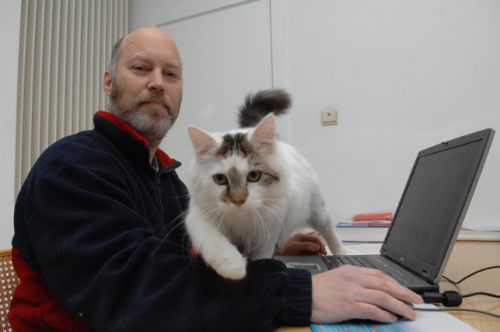Linux IS Ready For The Desktop
by Alain Baudrez (Wamukota)
I've read many postings and rants about Linux not being ready for the desktop, while my experience tends to state the opposite. Linux is — and has been for the last couple of years — ready for the desktop.
It all boils down to the type of audience you speak to.
Windows has been developed with the industry in mind. That implies that you have a group of well-trained IT guys who do the Windows laundry while you, at your desk, can work without bothering whether the latest patches are applied, the AV is up to date, Anti-malware filters are in place, …
But let's look at a typical home user.
What does 'Jane Doe' do (or would like to do) with her computer?
- Browse the web
- Send & Receive eMail
- Instant Messaging
- Skype
- Rip audio to MP3
- Play and organize her music collection
- Transfer music between PC and MP3 player
- Upload pictures/movies from a digital camera
- Red eye removal and minor enchantments of pictures
- Watch movies on DVD
- Edit her own video recordings
- Burn CD/DVD
- Write a few letters
- Keep budget in check with a simple spreadsheet
- Make small posters for festivities
- Create and maintain a website
- Play games
- Install new software
- Interact with wireless networks and bluetooth devices

Alain Baudez, a.k.a. Wamukota
Those actions seem familiar and they 'can' all be done with the pre-installed Windows. Correction. Not if you stick to your pre-installed Windows. For most of those actions, you need to buy expensive software, which for most of us is not tax deductible.
Looking at that list through Linux glasses, with the exception of some games, all can be done using a free modern state of the art Linux distribution.
So, Linux clearly has the edge on Windows here, and Windows being pre-installed anyway, we always have a fall-back for the few things that can not be done through Linux. Should Windows not come pre-installed, Linux would struggle, especially in the games area. But the simple fact that Windows comes pre-installed plays into the hands of a dual-boot Windows/Linux solution.
What should the same Jane Doe not have to do?
- Tamper with the system
- Bother about the legal status of the OS
- Fight malware and other nastinesses of the Internet
- Be responsible for maintaining system integrity through updates and patches
- Buy new hardware every 3 years to be able to accommodate the latest imposed upgrades
- Buy expensive software
When using Windows, this is just what Jane Doe has to do to keep her box running. The problems and performance loss inherent in the Windows system are a far cry from the fun and joy of having a computer she expected.
A modern Linux distribution is much simpler to maintain. Its concepts prevent a user crippling the system by disallowing her to venture in typical system folders. There are no legal issues. The distribution can be copied, passed on, etc., without problems.
There are almost no risks that viruses or malware will cripple the system.
Installing software is free and comes from a certified single set of servers.
Linux runs much longer on the same hardware.
All in all, Linux has the edge on Windows here too.
The general consensus is that Linux is hard to install. One cannot expect an average user to install Linux to dual-boot with their current Windows installation.
In fact, Linux is no harder to install than any other Operating System. But since Windows comes pre-installed, all the user must do is to activate the end user license to get going. The only thing we — Linux users — must do, is to install it on their computer in dual-boot mode, and give them a few how-tos on how to work with it. Isn't that something we all have done in the past many times?
Linux is ready for the desktop if you never hear back from those converted users again. It works and just keeps on working, something that cannot be said about the other pre-installed operating system.

